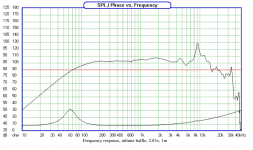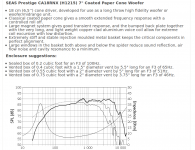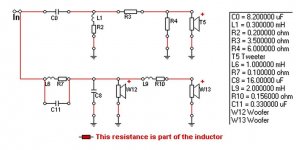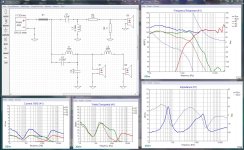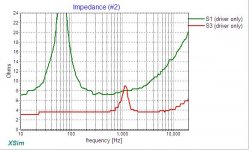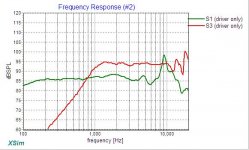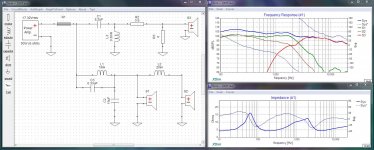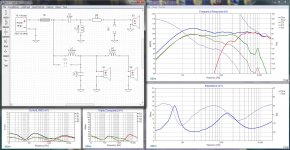We simply want some plots and a plan for a useable impedance and response.
@Kustomize.. If you link to plots of the drivers, we might be able to turn them into frd files for you.
@Kustomize.. If you link to plots of the drivers, we might be able to turn them into frd files for you.
We simply want some plots and a plan for a useable impedance and response.
@Kustomize.. If you link to plots of the drivers, we might be able to turn them into frd files for you.
Thankyou all!
@AllenB Here!
Attachments
Thankyou so much for that Douglas!
So I am attaching a file for the tweeter, which is the Vifa DQ25. This file was found in this thread in partsexpress techtalk.
Seas CA18RNX & Vifa DQ25SC16 FRD Files... -
Techtalk Speaker Building, Audio, Video Discussion Forum
And for the Zaph files, I retraced the graphs! I hope I did it right!
Sorry for double posting, the tweeter file in this is supposedly accurate, its not made by me!
I messed up with the Zaph file, but I have attached the FR response and impedance from Zaph's own website under the ZA5 Driver Data.
Sorry Kustomize, that doesn't look like the plot of a 7" driver?
How does that one look? - and this tweeter? Vifa DQ25SC16-04, 1" Titanium Dome Tweeter
Do you need one or both?
How does that one look? - and this tweeter? Vifa DQ25SC16-04, 1" Titanium Dome Tweeter
Do you need one or both?
Attachments
Sorry Kustomize, that doesn't look like the plot of a 7" driver?
How does that one look? - and this tweeter? Vifa DQ25SC16-04, 1" Titanium Dome Tweeter
Do you need one or both?
Sorry for causing confusion Allen!
The driver we are looking for the FRD and ZMA files of is the Zaph ZA5.
http://zaphaudio.com/ZA14W08/ZA14W08-datasheet.pdf
The image I posted is from this link above.
That post I shared, with the SEAS driver, shares the FRD file for the VIFA DQ25 tweeter that you linked above, yes that's the tweeter!
We don't need the SEAS files as I don't have something so nice 😛
Sorry!
1. Rename - remove the .txt (it's only there so I could upload the files)
2. Look at the curves to make sure they are right.
Wow that was quick!
Thankyou so much!
Will check through!
EDIT : The graphs seem to be quite accurate!!! Thankyou Allen!
EDIT 2 : I cross checked the Vifa DQ25 Tweeter files from the thread I linked earlier with the SEAS driver, it seems like the FRD file might be a little off than the actual response that I see on madisound for the tweeter.
Vifa DQ25SC16-04, 1" Titanium Dome Tweeter
And the FRD/ZMA file of the Vifa DQ25 can be found at post number 3
Seas CA18RNX & Vifa DQ25SC16 FRD Files... -
Techtalk Speaker Building, Audio, Video Discussion Forum
Last edited:
Thankyou douglas! That does look great to me! 😀 😀 😀
Now if Allen could verify that the files for the DQ25 are indeed accurate, I think that would help us make sure we are on the right path!
Now if Allen could verify that the files for the DQ25 are indeed accurate, I think that would help us make sure we are on the right path!
I'm just eating popcorn in the cheap seats here. 🙂
But I've just noticed something a bit horrid here:
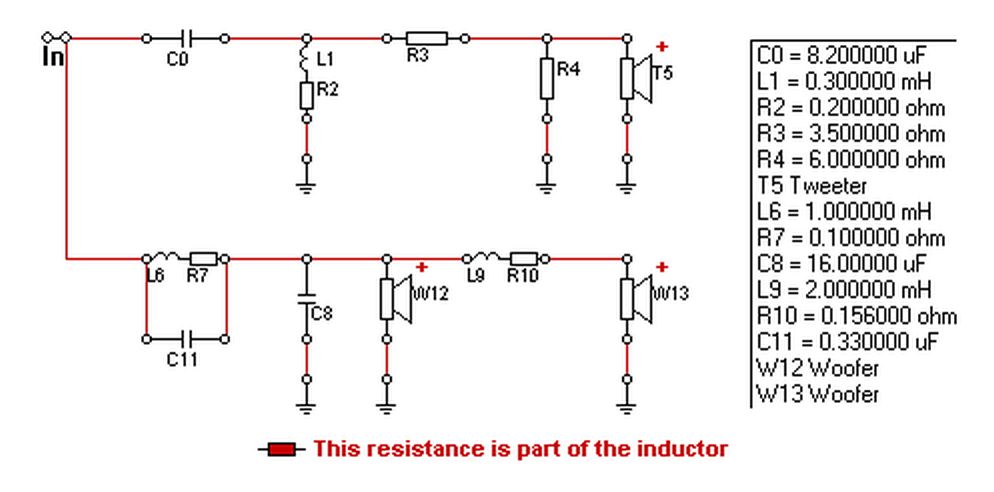
Tank notch 0.33uF C11 makes a dead short at high frequency!
Should have some resistance in series with it, IMO. Maybe 10 ohms.
But I've just noticed something a bit horrid here:
Tank notch 0.33uF C11 makes a dead short at high frequency!
Should have some resistance in series with it, IMO. Maybe 10 ohms.
dq25sc16-04
Thankyou so much Allen!
There seems to be a difference in the Frequency graph the most as I suspected.
dq25sc16-04
Thank you Allen ... but comparing that with the MAdisound graphs linked by Zaph Audio, there isn't a good correlation. If you notice the top end of the tweeter is very erratic... yours is almost too good 😀
1. I got it from here https://www.parts-express.com/pedocs/specs/264-1468--peerless-dq25sc16-04-spec-sheet.pdf
it appears to be an original peerless pdf.
2. I used the 0 degree axis. Now the experienced here should know what to do with an on-axis shot despite the way it looks.
it appears to be an original peerless pdf.
2. I used the 0 degree axis. Now the experienced here should know what to do with an on-axis shot despite the way it looks.
Attachments
Thankyou so much Allen!
There seems to be a difference in the Frequency graph the most as I suspected.
We can use Allen's graphs if you like... your decision.
Tank notch 0.33uF C11 makes a dead short at high frequency!
Yep, caught that. Thank you.
I'm easy, may have to wait until morning though 😉We can use Allen's graphs if you like...
Okay, first up ... that DQ25 tweeter is seriously gnarly. The unevenness in the high end (at the top of normal hearing) could make it sound abrasive, even tiring to listen to.
So, I'm thinking that you might want to swap them out...
The thumbnail and DXO shows the difference with just a tweeter swap, putting in the Dayton ND28f-6 which is a soft dome tweeter. This would be a bit rolled off in the high end but we can adjust for that. It would sound mellow, warm, with little or no rattle your nerves sibilance at the the high end.
At this point, I'm looking mainly at the tweeter type ... soft vs hard dome. You may wish to pick a different model of tweeter and as long as it can keep up with the woofers, we can try it too.
So, I'm thinking that you might want to swap them out...
The thumbnail and DXO shows the difference with just a tweeter swap, putting in the Dayton ND28f-6 which is a soft dome tweeter. This would be a bit rolled off in the high end but we can adjust for that. It would sound mellow, warm, with little or no rattle your nerves sibilance at the the high end.
At this point, I'm looking mainly at the tweeter type ... soft vs hard dome. You may wish to pick a different model of tweeter and as long as it can keep up with the woofers, we can try it too.
Attachments
This is what happens when a virus kills a part time business ... nothing better to do. 
Here is the same replacement tweeter with some tweaks to the crossover.
R3 and C3 can be removed. Parts replacements can be made per the schematic.
This design also eliminates the current runaway at high frequency (Your amplifiers will thank you).
The highest octave (10k to 20k) is still a bit rolled off, so this design will not be at all harsh sounding. The mids will be a bit forward. Baffle step for the bass is maintained. Should be pretty nice sounding. Just keep them away from corners or walls.

Here is the same replacement tweeter with some tweaks to the crossover.
R3 and C3 can be removed. Parts replacements can be made per the schematic.
This design also eliminates the current runaway at high frequency (Your amplifiers will thank you).
The highest octave (10k to 20k) is still a bit rolled off, so this design will not be at all harsh sounding. The mids will be a bit forward. Baffle step for the bass is maintained. Should be pretty nice sounding. Just keep them away from corners or walls.
Attachments
Last edited:
- Home
- Loudspeakers
- Multi-Way
- Working the crossover for better impedance
